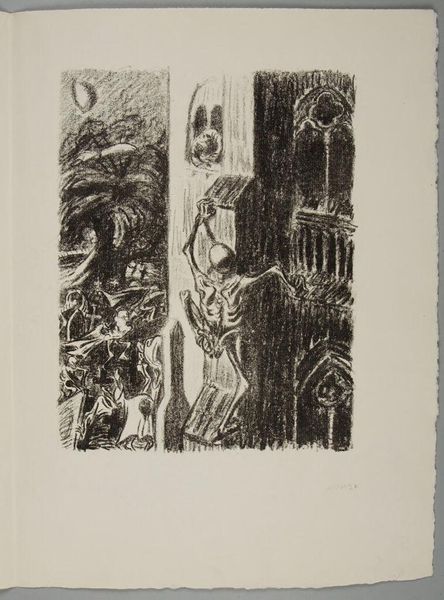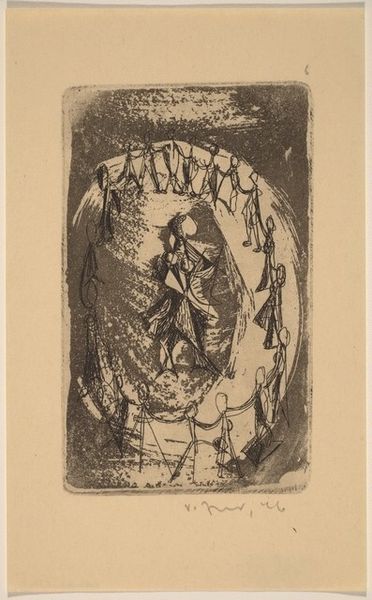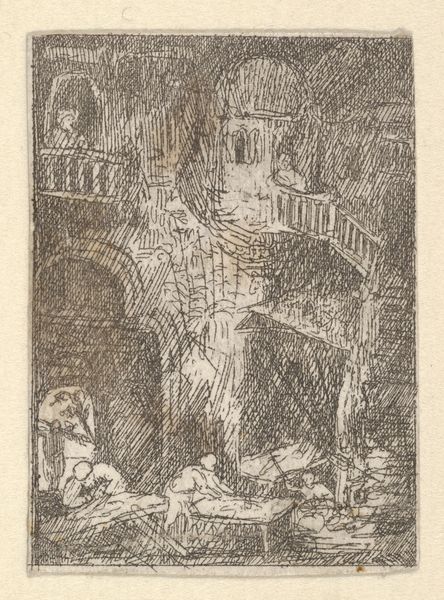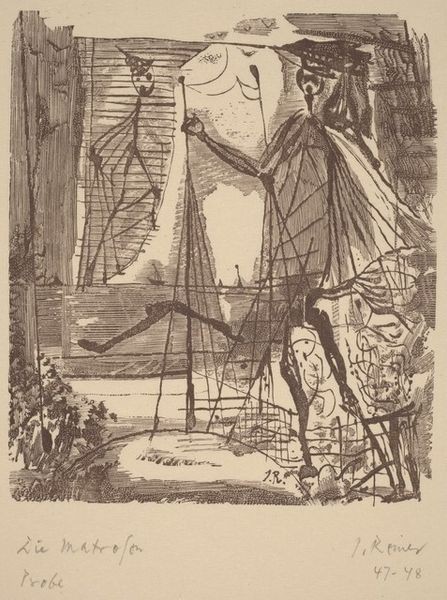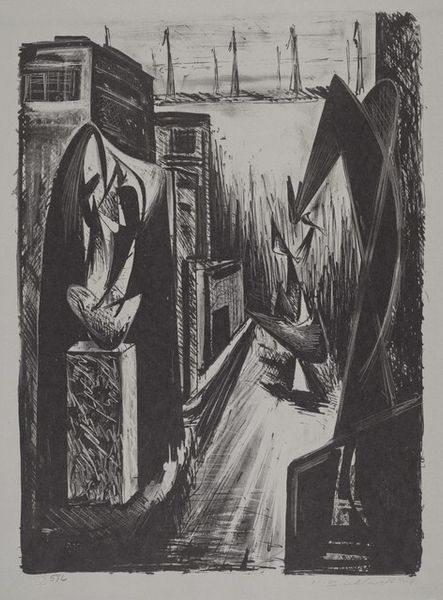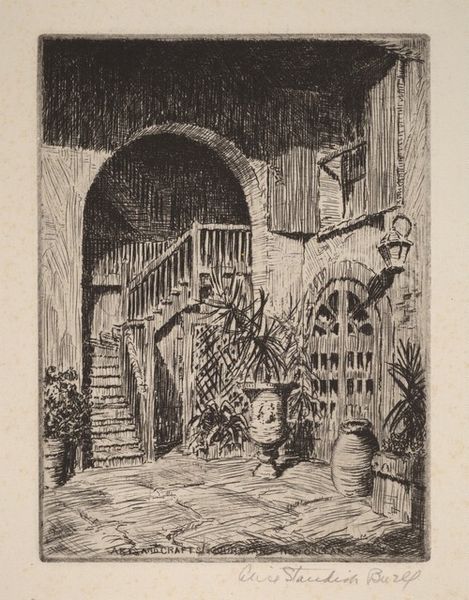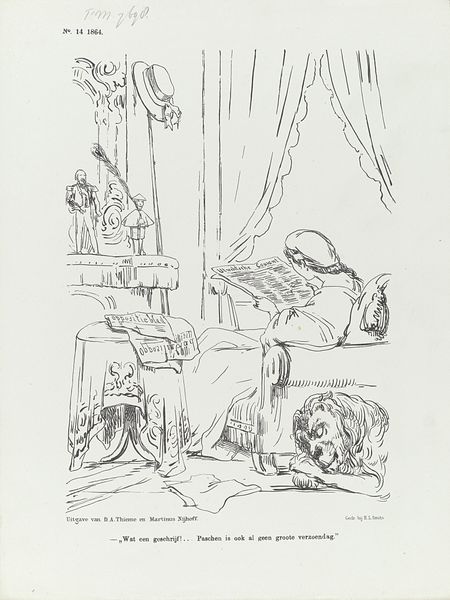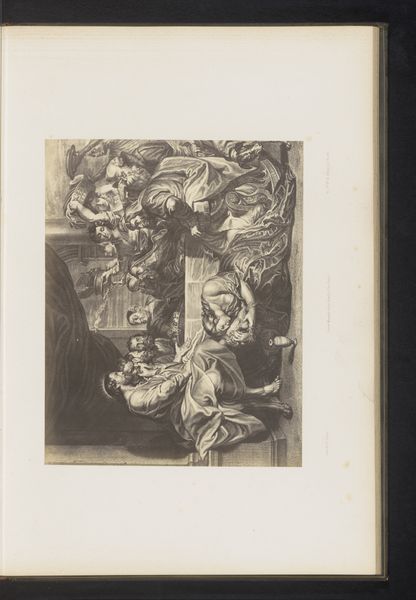
Dimensions: design: 25.8 x 20.2 cm (10 3/16 x 7 15/16 in.)
Copyright: CC0 1.0
Editor: This is Ernst Barlach's "The Dance of the Dead 3: Deathly Pursuer," its date is unknown. It's a somber drawing. I’m struck by how death is portrayed not as a release, but as an active, almost predatory force. What historical context might have influenced Barlach’s grim perspective? Curator: Barlach lived through immense social upheaval. The rise of industrialization, World War I and its aftermath significantly impacted his worldview. Notice how death is not just present but actively "pursuing." How might this imagery reflect anxieties about the social and political climate of the early 20th century? Editor: So the dread is perhaps about larger societal fears, not just personal mortality? Curator: Precisely. The figure of death becomes a commentary on the perceived fragility of life amidst widespread suffering and loss. Consider how his work challenges conventional heroic narratives prevalent in public art. Editor: It's interesting to think about how art becomes a mirror reflecting societal anxieties. Curator: Yes, and how Barlach uses that reflection to critique power structures and offer a counter-narrative through his art.
Comments
No comments
Be the first to comment and join the conversation on the ultimate creative platform.
